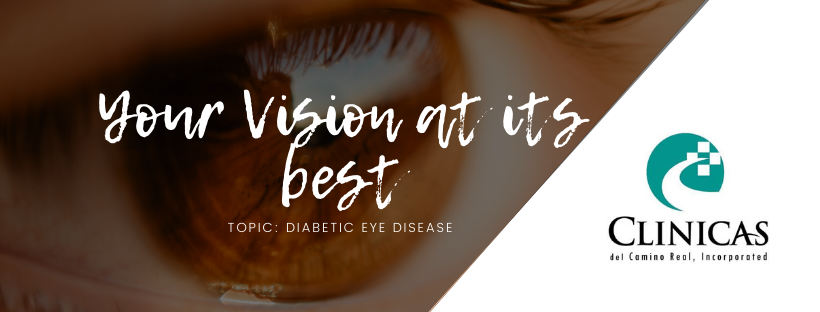
According to the Ophthalmology Times, more people are being diagnosed with diabetes at a younger age, and because of this fact, more people are at risk of permanent vision loss than ever before. Even though people with diabetes have higher risks of eye disease, with the proper care and attention, any minor issues can stay just that: minor. November is Diabetic Eye Disease Awareness Month, so there's no better time to arm yourself with knowledge and get proactive if you are at risk.
Why Diabetes Affects Your Eyes
Multiple types of eye disease are linked to diabetes, and each carries its own risks to visual capabilities.
Glaucoma - Those who have diabetes are more likely to develop glaucoma, which is a disease that involves pressure buildup in the eye that prevents proper blood flow to the optic nerve. While several treatments are available, glaucoma is a progressive condition and can lead to blindness.
Cataracts - Cataracts are common among people with diabetes, and diabetes can mean you are at risk of the early development of cataracts and cataracts that progress faster than usual.
Retinopathy - Three types of retinopathy exist: proliferative, macular edema, and non-proliferative. All three types of diabetic retinopathy are progressive conditions, which means they get worse with time. However, there are treatment options available that slow the progression of retinopathy.
Who Is Most At Risk of Diabetic Eye Disease
Just as certain members of the population are more at risk of developing diabetes, certain people are more at risk of developing diabetic eye disease and eye conditions related to diabetes. According to the American Diabetes Association, for example, people with type I diabetes are most at risk of developing nonproliferative retinopathy, and many people with type II diabetes will also develop the condition. The people who are most at risk are those who:
- Have uncontrolled blood glucose levels
- Also have high blood pressure
- Have had diabetes the longest
- Have a genetic predisposition for diabetic eye disease
Some people have damage to their vision due to diabetes but have no symptoms initially. Unfortunately, by the time symptoms arise, the damage can be irreversible, which is why regular optometric exams are critical for those with diabetes.
How to Protect Your Eyes If You Have Diabetes
Simple measures can be taken to protect your eyes if you have either type I or type II diabetes. PreventBlindness.org offers a good list of tips to remember:
- Work hard to manage your blood sugar levels and get your A1C checked every 6 months
- Make sure your blood sugar levels are kept in check
- Keep an eye on your cholesterol intake and levels
- Don't smoke! Smoking raises your risks of diabetic eye disease
- Get your eyes examined by an optometrist once a year
Help Spread Diabetic Eye Disease Awareness
As many as 1 in 4 people in the United States have diabetes and don't know they do. Unfortunately, unmanaged diabetes is one of the leading reasons people develop diabetic eye disease. Get to know your risks, talk to your doctor about obtaining an A1C blood test if you are at risk, and do your part to spread awareness about diabetes and blindness in celebration of Diabetic Eye Disease Awareness Month.
Meta Title
November Is Diabetic Eye Disease Awareness Month | Be Aware!
Meta Description
November is Diabetic Eye Disease Awareness Month. Find out who is at risk, what eye diseases are associated, and why awareness is so important.

